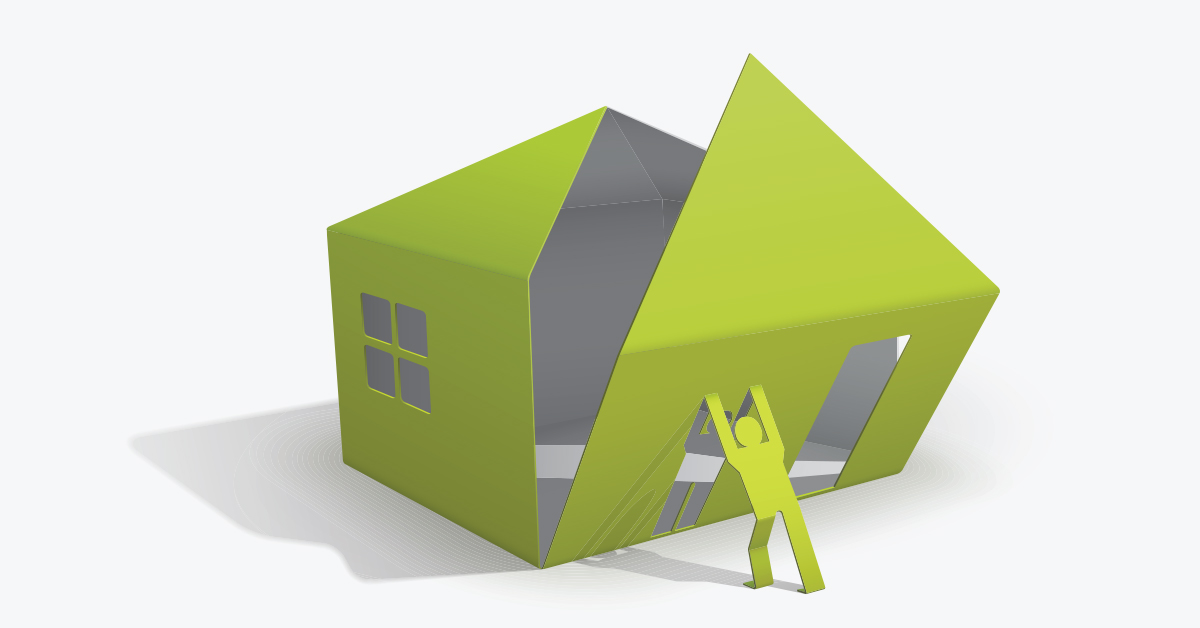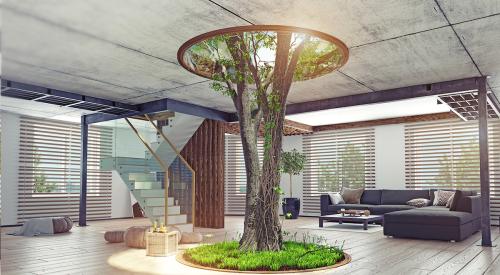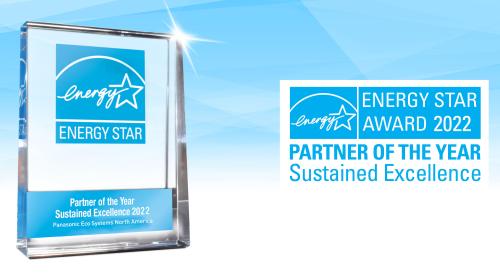What can homes do for us beyond providing shelter, and how can they help keep us healthy and safe?
Now more than ever, homeowners are searching for successful strategies to improve the health of their homes in an effort to protect their families.
“It’s shocking how palpable the benefits of healthy homes are,” insists Sam Rashkin, Chief Architect at the U.S. Department of Energy’s Building Technologies Office. “We spend $40 billion a year on organic food and $20 billion each year on bottled water to stay healthy, and the promise of those things are so much less tangible than maintaining a healthy home—primarily because we ingest seven times more air than food and water each day.”
Rashkin believes that the most effective way to communicate about the benefits of a healthy home is to keep the message simple. “We make selling homes very complicated,” he says with a smile. “But interest in healthy homes, which was surging before pandemic and exploding now, is not only easy to communicate, it’s incredibly bankable for building professionals.”
Rashkin believes that proactive indoor air quality systems, like Cosmos by Panasonic, that have sensors on the front end to monitor toxins, dust, temperature, humidity, CO2, and volatile organic compounds (VOCs) and proactively turn on ventilation fans, range hoods and ERVs when those elements are sensed are the future of IAQ. (Learn more about Cosmos at Cosmoshealthyhomesystem.com.)
Rashkin’s colleague, Aaron Johnson, Environmental Protection Specialist at the U.S. Environmental Protection Agency (EPA), agrees that consumer interest in indoor air quality is swelling. “IAQ is eclipsing energy efficiency in terms of the top area of consumer interest,” asserts Johnson.
Johnson asserts that IAQ improvements can be made virtually anywhere in the home during any new construction or retrofit project. “There is a whole frontier waiting to be explored by builders and contractors who want to integrate products that meet IAQ requirements,” he says.
Both Rashkin and Johnson warn buyers to beware: “It’s kind of like the wild west in terms of IAQ products right now because there is no certification or labeling,” Rashkin asserts. “Consumers who are interested in products that effectively improve and address IAQ need to make sure that claims are legitimate.”
Meet Indoor airPLUS: Indoor air quality best practices
In an effort to streamline healthy home choices, the EPA has developed a program, Indoor airPLUS, that addresses IAQ issues such as moisture, radon, ventilation, comfort, mechanical systems, and contaminants.
Through the program, the EPA offers a checklist with easy steps to improve IAQ and as well as a methodology for verification. Johnson claims that it only costs about $1,500 to outfit a home with the program’s recommended IAQ upgrades.
An upgraded version of the program is set to launch later this year, which will raise the bar on requirements for ducted HVAC systems, MERV filters, and radon requirements (including testing and active mitigation), and will provide more guidance for IAQ technology. The new version will also include a protocol for existing homes (the current version only addresses new construction.)
According to Rashkin, the DOE has also created guidance for consumers to protect their homes from germs during and after the COVID crisis. “We’re trying to help people understand how they can equip homes to be responsive to challenges like pandemics, which is an easy upsell for builders right now because people have shown a willingness to pay more for healthy homes,” he says.
Rashkin’s best advice for builders: “Health is a huge, hard trend that’s not going away. Don’t miss the boat, because it’s IAQ’s time to shine!”















